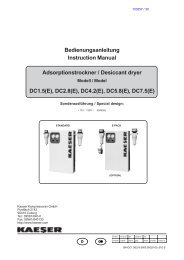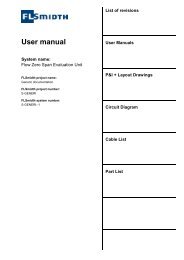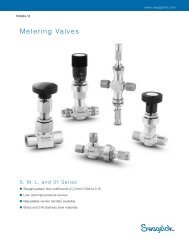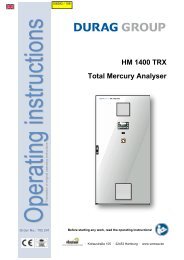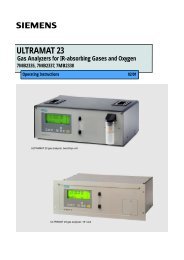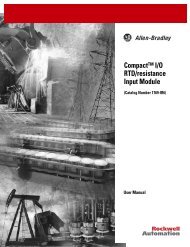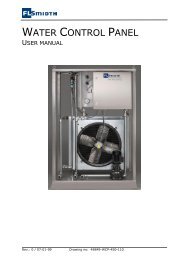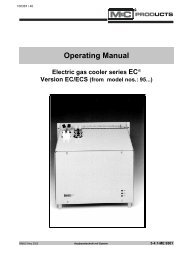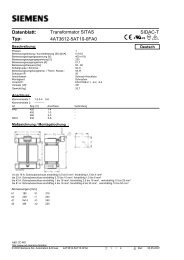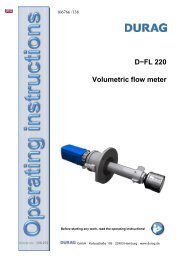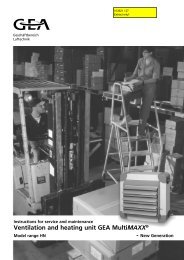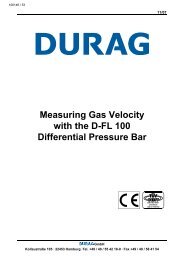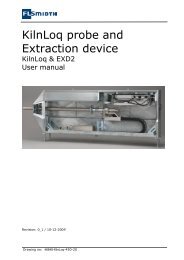Measuring Gas Velocity with the D-FL 100 Differential Pressure Bar
Measuring Gas Velocity with the D-FL 100 Differential Pressure Bar
Measuring Gas Velocity with the D-FL 100 Differential Pressure Bar
- No tags were found...
Create successful ePaper yourself
Turn your PDF publications into a flip-book with our unique Google optimized e-Paper software.
D−<strong>FL</strong> <strong>100</strong> Seite 11. ApplicationOne of <strong>the</strong> most popular and reliable methods of measuring <strong>the</strong> differential pressure in a duct or stack isby means of a mechanical device such as a venturi or a differential pressure bar.The differential pressure bar is useful in measuring <strong>the</strong> velocity of exhaust gases that are not saturated<strong>with</strong> steam or water vapors. These gases may be generated by burning fossil fuels; e.g., in currentplants, waste incinerators and cement kilns. The differential pressure bar is designed to measurebetween 0 and 2,000,000 m 3 /h, depending on velocity and on <strong>the</strong> inner diameter of <strong>the</strong> duct/stack. Theminumum velocity should be more than 3 m/s.The DURAG D-<strong>FL</strong> <strong>100</strong> <strong>Velocity</strong> <strong>Measuring</strong> System has been suitability tested by TÜV Nord, Test ReportNo 128CU11650 dated 29. March 1996.2. Functional DescriptionThere are several advantages to using a differential pressure bar instead of a venturi to measure <strong>the</strong>velocity of a gas. A venturi reduces <strong>the</strong> pressure, thus causing pressure loss, whereas a differentialpressure bar has only a marginal influence on <strong>the</strong> gas flow. Because a differential pressure bar hasminimal effect on <strong>the</strong> gas flow, it can be used in shorter ducts/stacks, where installation of a venturiwould not be as cost-effective. Finally, a differential pressure bar requires less blower force for equalgas velocity, making it less expensive in overall operating costs.The velocity of a gas in a duct/stack is derived from <strong>the</strong> difference between <strong>the</strong> total impact pressureand <strong>the</strong> reference pressure on <strong>the</strong> differential pressure bar or Pitot tube (Fig. 1). This relationship isexpressed by Bernoulli’s equation:(Eq. 1)ΔPPgesPstatρvdifferential pressuretotal impact pressure (flow side)static (reference) pressuregas densityvelocityGmbH



